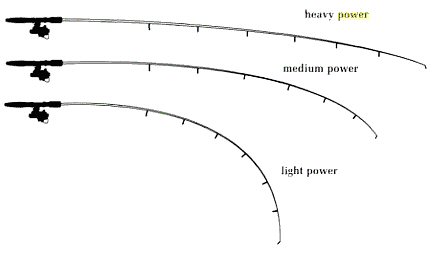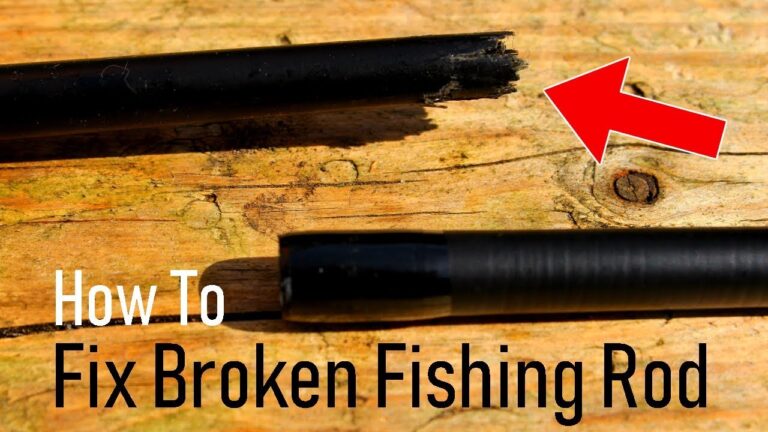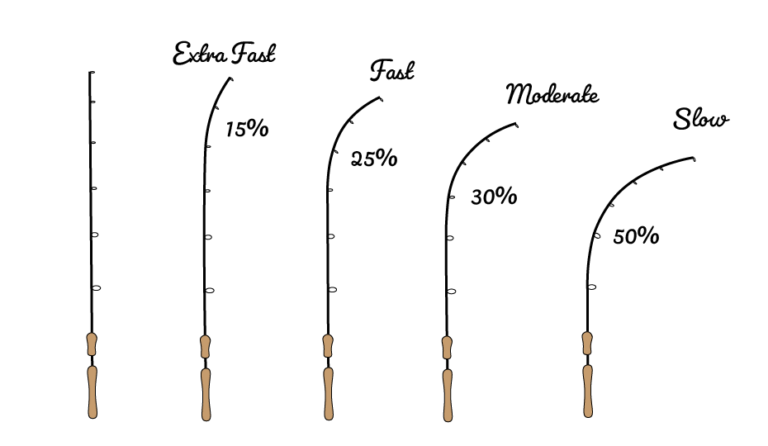How to Put Line on a Fishing Rod

To put line on a fishing rod, begin by opening the bail, then tie the line to the spool with an arbor knot. Next, close the bail and reel the line evenly onto your rod.
Outfitting your fishing rod with the right line is the cornerstone of a successful angling adventure. Every seasoned fisherman knows the importance of a properly spooled reel; it’s an essential skill that bridges the gap between a novice and a proficient angler.
Whether you’re preparing for a serene day at the lake or planning to reel in the big catch in surging streams, the process of spooling your rod demands precision and attention. This brief guide will arm you with the necessary steps to ensure your line is secure and evenly distributed across the spool, thus enhancing your fishing efficiency and effectiveness. Remember, the way you set up your line can make a significant difference in your fishing performance, so take the time to do it right.

Credit: www.wikihow.com
Essential Gear For Line Setup
Selecting the right fishing line is a key step. Check the line’s weight and material. You want a line that fits the fish you’re catching. A heavier line is for big fish. A lighter line suits smaller fish. Lines come in various types. There’s monofilament, braided, and fluorocarbon. Each has different strengths and weaknesses.
Tools needed for threading the line are simple. You will need a pair of scissors or a line cutter. A cleaning cloth keeps the line dirt-free. Use a rod clamp to hold the rod steady. Don’t forget a spooler to wind the line properly. Lastly, have some swivels and hooks for the end of your line.
| Tool | Use |
|---|---|
| Scissors/Line Cutter | Cut the fishing line |
| Cleaning Cloth | Clean the line |
| Rod Clamp | Keep rod steady |
| Spooler | Wind the line |
| Swivels and Hooks | Attach to the line end |
Preparation Before Spooling
Proper preparation ensures a smooth experience while spooling your fishing rod. Start by cleaning the rod and reel. A soft, damp cloth works well for wiping down the equipment. Debris and dirt can cause problems with the line. Clean gear also helps in maintaining its performance over time.
Understanding line capacity is crucial before the line goes on the reel. Each reel specifies the recommended line length and thickness. Adhering to these guidelines prevents overloading or underutilizing the reel. Check the specifications on the reel for optimal results.
| Reel Part | Cleaning Action |
|---|---|
| Spool | Wipe and dry thoroughly |
| Handle | Clean with a soft cloth |
| Body | Inspect for grime, remove if needed |
Attaching The Line To The Reel
Attaching the line to your fishing reel correctly is crucial for a smooth fishing experience. Ensure the reel is open and stable before you start. Grab the end of the fishing line and tie it to the spool using an arbor knot. This secure knot prevents the line from slipping. After tying the knot, trim any excess line close to the spool to maintain neatness.
To prevent line twists as you load the reel, place the new line spool on the floor. The label should face upwards. As you wind the line onto the reel, it should come off the spool in the same direction it will go onto the reel. This process helps minimize twists. For best results, ask a friend to hold the spool lightly as you reel in, maintaining slight tension. This tension ensures the line lays smoothly and evenly on the reel.

Credit: www.wikihow.com
Spooling The Line Onto The Reel
To spool the line onto the reel, it’s vital to do it right. First, ensure the reel is securely fastened to the rod. Then, open the bail and tie the line to the reel. Use a basic overhand knot. After securing the line, close the bail. Now, hold the line a foot away from the reel.
Maintain a tight grip for even tension. This prevents twists and kinks. As you reel, the line must distribute evenly across the spool. Use your fingers to guide the line from side to side. Ensure it lays flat and smooth. By doing so, you’ll avoid future tangles and issues when casting.
Finishing Touches
After you spool the new line on your reel, you’ll need to trim any extra. Use sharp scissors to cut the line. Leave about a quarter-inch above the reel. This prevents line from slipping away.
Proper storage is key to keep your fishing line in good shape. Use a rod sleeve or a reel cover to protect your setup. Store your rod vertically if possible to avoid bends or warps. Keep it in a cool, dry place away from direct sunlight. This ensures that your line remains strong and untangled for your next fishing adventure.
Troubleshooting Common Issues
Dealing with line snags and knots can be frustrating. To tackle this, apply steady and gentle pressure. Do not pull too hard. Doing so may worsen the snag or knot. Instead, patience is key. Slowly unwind the twisted sections.
Use your fingers to tease out the knots. For stubborn tangles, tools like tweezers or needle-nose pliers help. Also, applying a line conditioner may reduce future knots.
Adjusting for line memory and coiling requires attention. Soak the spool in warm water for a few minutes. This helps relax the line. Also, stretch the line gently before spooling. A line with less memory casts smoother and farther.

Credit: tailoredtackle.com
Frequently Asked Questions On How To Put Line On A Fishing Rod
What Is The Best Way To Put Line On A Fishing Pole?
Open the bail on your reel, thread the line through the rod’s guides, tie the line to the reel spool, close the bail, and then wind the handle to spool the line, keeping tension.
How Do You Put Line On A Fishing Reel For Beginners?
Open your bail, thread the line through the guides, and tie it to the spool. Close the bail and, while keeping tension, reel the line by turning the handle. Stop when it’s 1/8 inch from the rim.
How Do You Spool A Fishing Line?
Open your fishing reel’s bail, tie the line to the spool, and close the bail. Hold the line with slight tension and reel it in slowly to ensure even distribution without twists. Trim excess line beyond the reel’s lip for optimal casting.
How Do You Put Line On A Pen Fishing Pole?
To install line on a pen fishing pole, open the reel cover, tie the line to the spool, close the cover, and then wind the line tightly by turning the handle.
Conclusion
Wrapping up, mastering the art of spooling your fishing rod is a skill worth perfecting. With practice and these steps, you’ll ensure your line is ready for that big catch. So grab your reel, get threading, and let the tranquil hours by the water bring you both peace and excitement.
Happy fishing!



